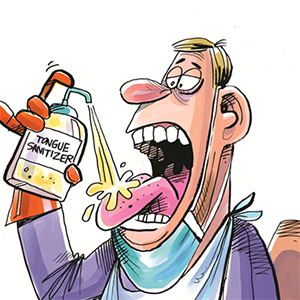Kakhovka dam breach raises risk for Zaporizhzhia nuclear plant – receding waters narrow options for cooling
Published in Political News
A blast on June 6, 2023, destroyed the Kakhovka dam on the Dnieper River in eastern Ukraine. The rupture lowered water levels in a reservoir upriver at the Zaporizhzhia Nuclear Power Plant in the city of Enerhodar. The reservoir supplies water necessary for cooling the plant’s shutdown reactors and spent fuel, which is uranium that has been largely but not completely depleted by the fission reaction that drives nuclear power plants.
The International Atomic Energy Agency, which has inspectors on-site to monitor effects of the war at the plant, issued a statement saying that there was no imminent danger. Nevertheless, the destruction of the dam increases the risk of a disaster at the plant, a risk already heightened by ongoing combat in the area.
The Conversation asked Najmedin Meshkati, a professor and nuclear safety expert at the University of Southern California, to explain what the dropping water level means for the safety of the nuclear power plant and the ongoing risks to the plant’s spent fuel.
The immediate situation is becoming very precarious. The dam is downstream from the plant, meaning that the flooding will not jeopardize the plant. But the plant draws water from a major reservoir on the river for its cooling system. This reservoir is draining because the downstream dam has been damaged.
The plant doesn’t need the massive amount of water it otherwise would because its six reactors are in cold shutdown. But the plant still needs water for three purposes: to reduce the residual heat from the shutdown reactors, to cool the spent fuel, and to cool the emergency diesel generators if the plant loses off-site power.
The plant’s operators pumped water from the reservoir into a cooling pond, which is why the IAEA said the plant has enough water for several months. But that’s the last resort, which is why the agency also said that it’s vital that the cooling pond remains intact. If the plant loses the cooling pond, the only hope would be to try something like they did at the Fukushima nuclear power plant after the earthquake and tsunami in Japan in 2011. They brought in huge water pumps to pump saltwater from the Pacific Ocean into the reactors to cool them down. The plant operators may need to try to pump water from the Dnieper River.
The two lifelines of any nuclear plant, whether operational or closed down, are water and electricity. The newly launched Ukrainian counteroffensive puts these two lifelines in further jeopardy. Since the Russian occupation, the plant has suffered a lot and lost off-site power seven times. My immediate concern is that if the plant loses its last remaining power line, which powers the cooling pumps, then it needs to rely on emergency diesel generators. There are 20 generators with on-site storage of only 10 to 15 days of fuel supply. Getting fuel while the counteroffensive is going on is another major challenge.
The fission reaction that generates heat in a nuclear power plant is produced by positioning a number of uranium fuel rods in close proximity. Shutting down a nuclear reactor involves inserting control rods between the fuel rods to stop the fission reaction.
The reactor is then in cooldown mode as the temperature decreases. According to the U.S. Nuclear Regulatory Commission, once the temperature is below 200 degrees Fahrenheit (93 Celsius) and the reactor coolant system is at atmospheric pressure, the reactor is in cold shutdown.
When the reactor is operating, it requires cooling to absorb the heat and keep the fuel rods from melting together, which would set off a catastrophic chain reaction. When a reactor is in cold shutdown, it no longer needs the same level of circulation.
The shutdown has removed a huge element of risk. The Zaporizhzhia Nuclear Power Plant is a pressurized water reactor. These reactors need constant cooling, and the cooling pumps are gigantic, powerful electricity-guzzling machines.
Cold shutdown is the state in which you do not need to constantly run the primary cooling pumps at the same level to circulate the cooling water in the primary cooling loop. Now, at least if the plant loses offsite power, the operators won’t have to worry about trying to cool an operating reactor with cranky diesel generators.
And by shutting down all the reactors, the plant operators have been relieved of a considerable amount of their workload monitoring the reactors amid the ongoing uncertainties around the site. This substantially reduced the potential for human error.
The operators’ jobs are likely to be much less demanding and stressful now than before. However, they still need to constantly monitor the status of the shutdown reactors and the spent fuel pools.
The plant still needs a reliable source of electricity to cool the six huge spent fuel pools that are inside the containment structures and to remove residual heat from the shutdown reactors. The cooling pumps for the spent fuel pools need much less electricity than the cooling pumps on the reactor’s primary and secondary loops, and the spent fuel cooling system could tolerate a brief electricity outage.
One more important factor is that the spent fuel storage racks in the spent fuel pools at the Zaporizhzhia Nuclear Power Plant were compacted to increase capacity, according to a 2017 Ukrainian government report to the IAEA. The greater number and more compacted the stored spent fuel rods, the more heat they generate and so more power is needed to cool them.
There is also a dry spent fuel storage facility at the plant. Dry spent fuel storage involves packing spent fuel rods into massive cylinders, or casks, which require no water or other coolants. The casks are designed to keep the fuel rods contained for at least 50 years. However, the casks are not under the containment structures at the plant, and though they were designed to withstand being crashed into by an airliner, it’s not clear whether artillery shelling and aerial bombardment, particularly repeated attacks, could crack open the casks and release radiation into the grounds of the plant.
The closest analogy to this scenario could be a terrorist attack that, according to a seminal study by the National Research Council, could breach a dry cask and potentially result in the release of radioactive material from the spent fuel. This could happen through the dispersion of fuel particles or fragments or the dispersion of radioactive aerosols. This would be similar to the detonation of a “dirty bomb,” which, depending on wind direction and dispersion radius, could result in radioactive contamination. This in turn could cause serious problems for access to and work in the plant.
Rafael Mariano Grossi, the head of the IAEA, briefed the U.N. Security Council on May 30, 2023, about the situation at the Zaporizhzhia plant. He called on Russia and Ukraine to ensure that the conflict does not put the plant at risk. Grossi has been to the Security Council several times. A week before the dam failed, he said it was the most important briefing that he had given to the council. To date, there has been no draft resolution from the Security Council.
This situation is rapidly evolving. And if something happens and there is a radiation release, it’s going to spread around the world.
This is an updated version of an article originally published on Sept. 13, 2022. The article has been updated to include news of the destruction of a dam downriver from the nuclear power plant and the IAEA’s report to the U.N. Security Council about reducing the risk that combat poses to the plant.
This article is republished from The Conversation, an independent nonprofit news site dedicated to sharing ideas from academic experts. The Conversation is trustworthy news from experts, from an independent nonprofit. Try our free newsletters.
Read more:
Crippling civilian infrastructure has long been part of Russian generals’ playbook – Putin is merely expanding that approach
US military spending in Ukraine reached nearly $50 billion in 2022 – but no amount of money alone is enough to end the war
Najmedin Meshkati received research funding from the U.S. Nuclear Regulatory Commission in the mid-1990s.
































































Comments